Tony
Qiao
Field Testing of a Stochastic Planner for ASV Navigation Using Satellite Images
Sep 26, 2023



Abstract:We introduce a multi-sensor navigation system for autonomous surface vessels (ASV) intended for water-quality monitoring in freshwater lakes. Our mission planner uses satellite imagery as a prior map, formulating offline a mission-level policy for global navigation of the ASV and enabling autonomous online execution via local perception and local planning modules. A significant challenge is posed by the inconsistencies in traversability estimation between satellite images and real lakes, due to environmental effects such as wind, aquatic vegetation, shallow waters, and fluctuating water levels. Hence, we specifically modelled these traversability uncertainties as stochastic edges in a graph and optimized for a mission-level policy that minimizes the expected total travel distance. To execute the policy, we propose a modern local planner architecture that processes sensor inputs and plans paths to execute the high-level policy under uncertain traversability conditions. Our system was tested on three km-scale missions on a Northern Ontario lake, demonstrating that our GPS-, vision-, and sonar-enabled ASV system can effectively execute the mission-level policy and disambiguate the traversability of stochastic edges. Finally, we provide insights gained from practical field experience and offer several future directions to enhance the overall reliability of ASV navigation systems.
A Unified Neural Network Approach for Estimating Travel Time and Distance for a Taxi Trip
Oct 12, 2017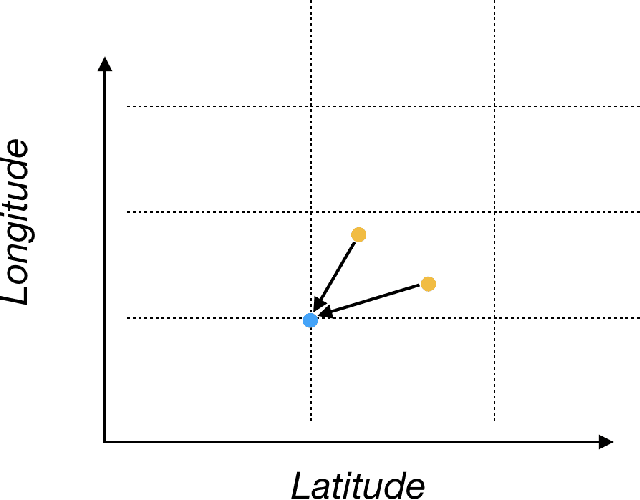
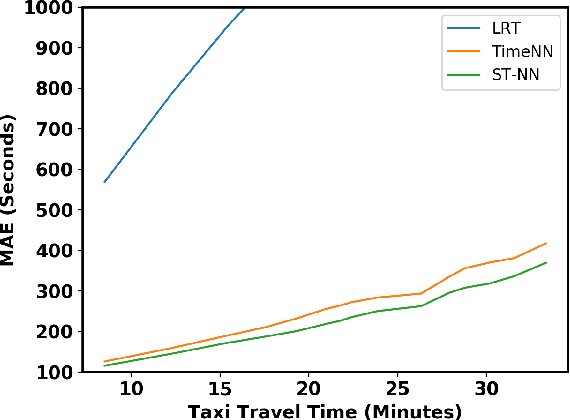
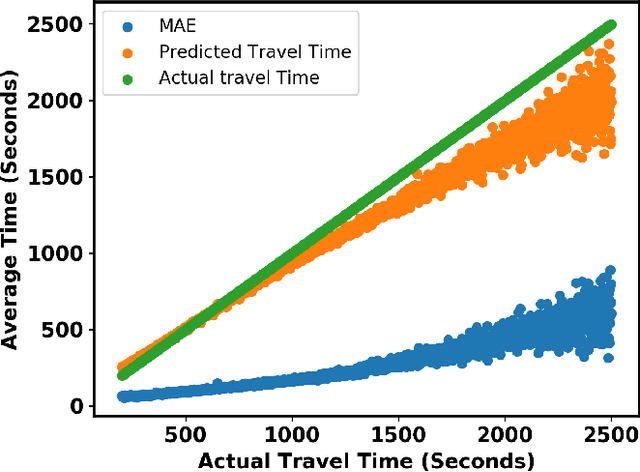
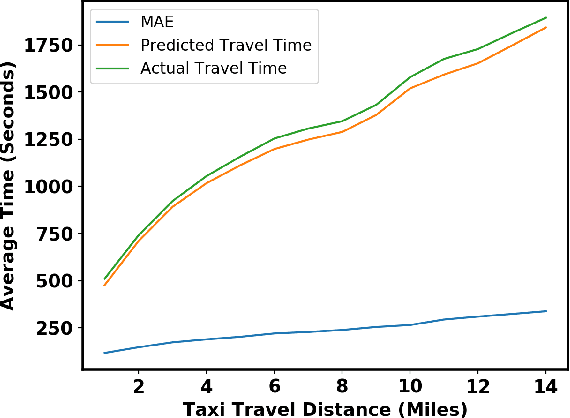
Abstract:In building intelligent transportation systems such as taxi or rideshare services, accurate prediction of travel time and distance is crucial for customer experience and resource management. Using the NYC taxi dataset, which contains taxi trips data collected from GPS-enabled taxis [23], this paper investigates the use of deep neural networks to jointly predict taxi trip time and distance. We propose a model, called ST-NN (Spatio-Temporal Neural Network), which first predicts the travel distance between an origin and a destination GPS coordinate, then combines this prediction with the time of day to predict the travel time. The beauty of ST-NN is that it uses only the raw trips data without requiring further feature engineering and provides a joint estimate of travel time and distance. We compare the performance of ST-NN to that of state-of-the-art travel time estimation methods, and we observe that the proposed approach generalizes better than state-of-the-art methods. We show that ST-NN approach significantly reduces the mean absolute error for both predicted travel time and distance, about 17% for travel time prediction. We also observe that the proposed approach is more robust to outliers present in the dataset by testing the performance of ST-NN on the datasets with and without outliers.
Tracking Sentiment in Mail: How Genders Differ on Emotional Axes
Sep 24, 2013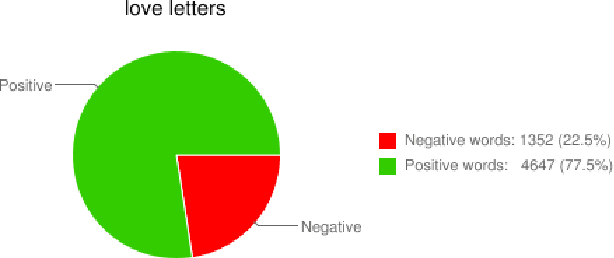
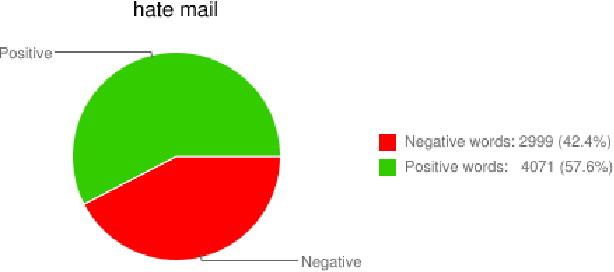
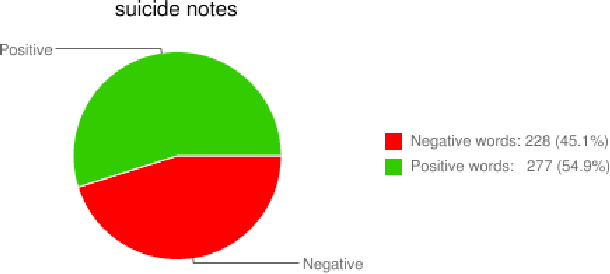
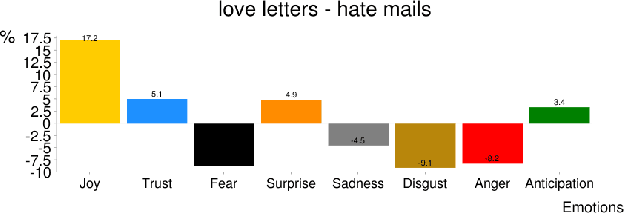
Abstract:With the widespread use of email, we now have access to unprecedented amounts of text that we ourselves have written. In this paper, we show how sentiment analysis can be used in tandem with effective visualizations to quantify and track emotions in many types of mail. We create a large word--emotion association lexicon by crowdsourcing, and use it to compare emotions in love letters, hate mail, and suicide notes. We show that there are marked differences across genders in how they use emotion words in work-place email. For example, women use many words from the joy--sadness axis, whereas men prefer terms from the fear--trust axis. Finally, we show visualizations that can help people track emotions in their emails.
 Add to Chrome
Add to Chrome Add to Firefox
Add to Firefox Add to Edge
Add to Edge